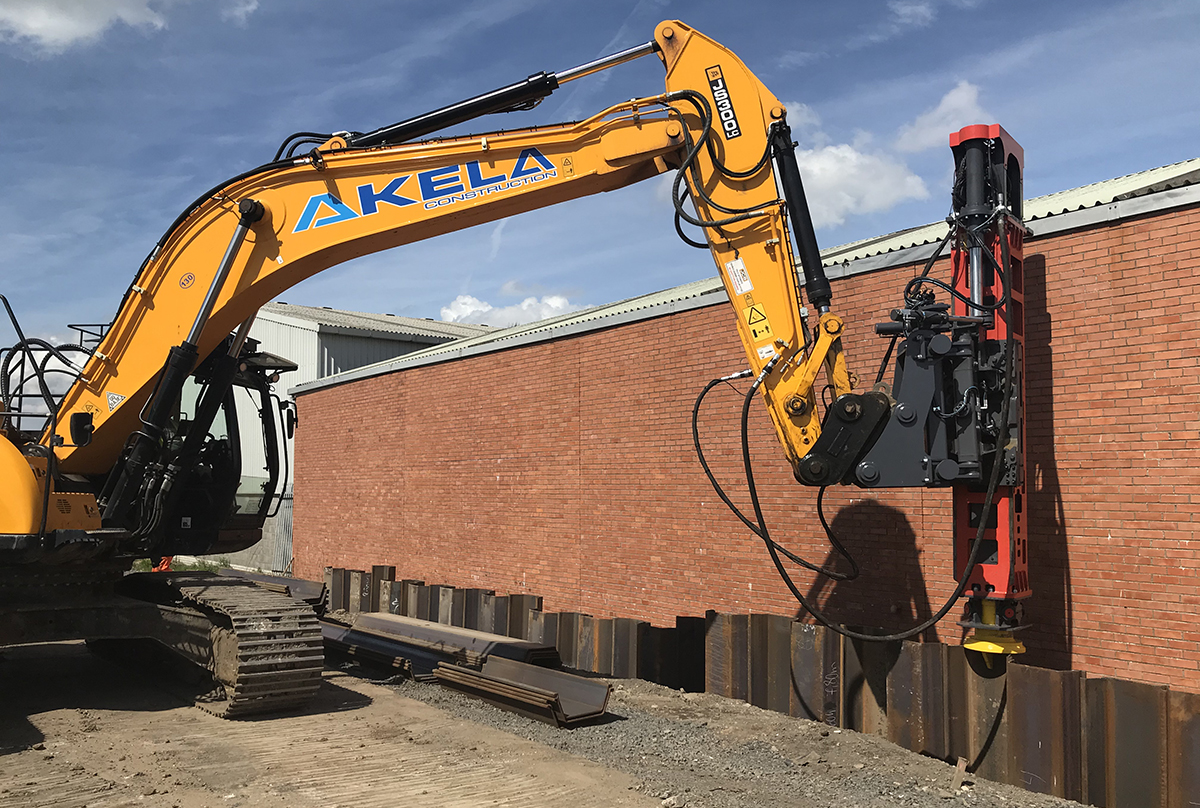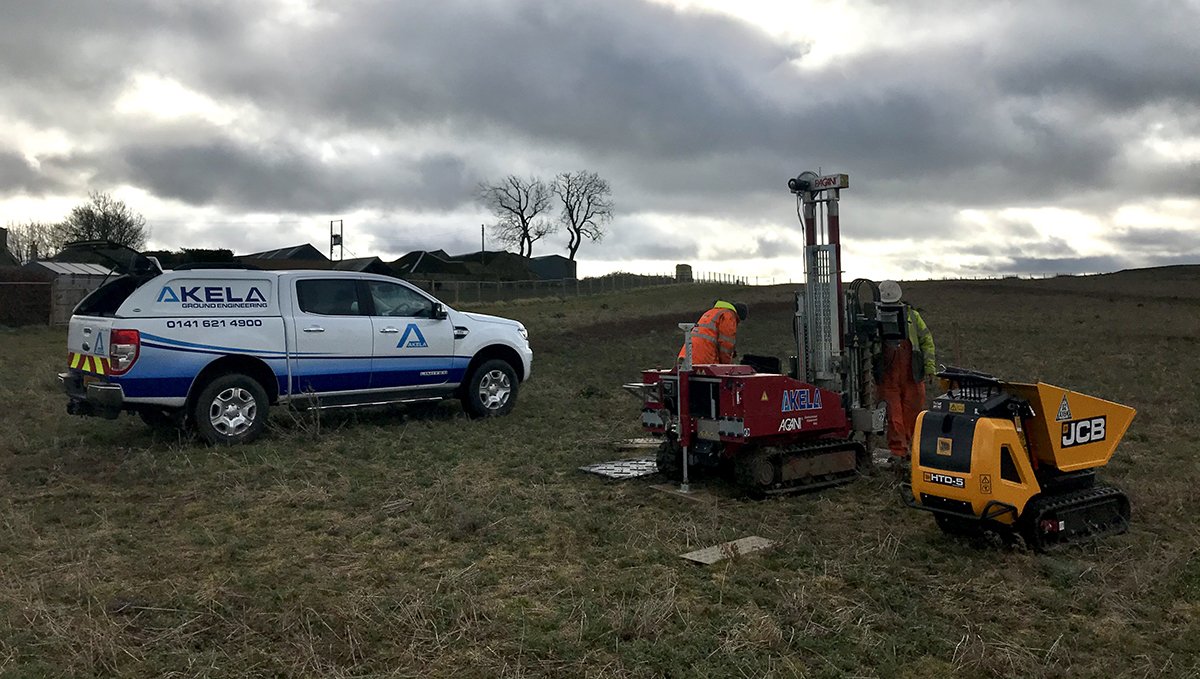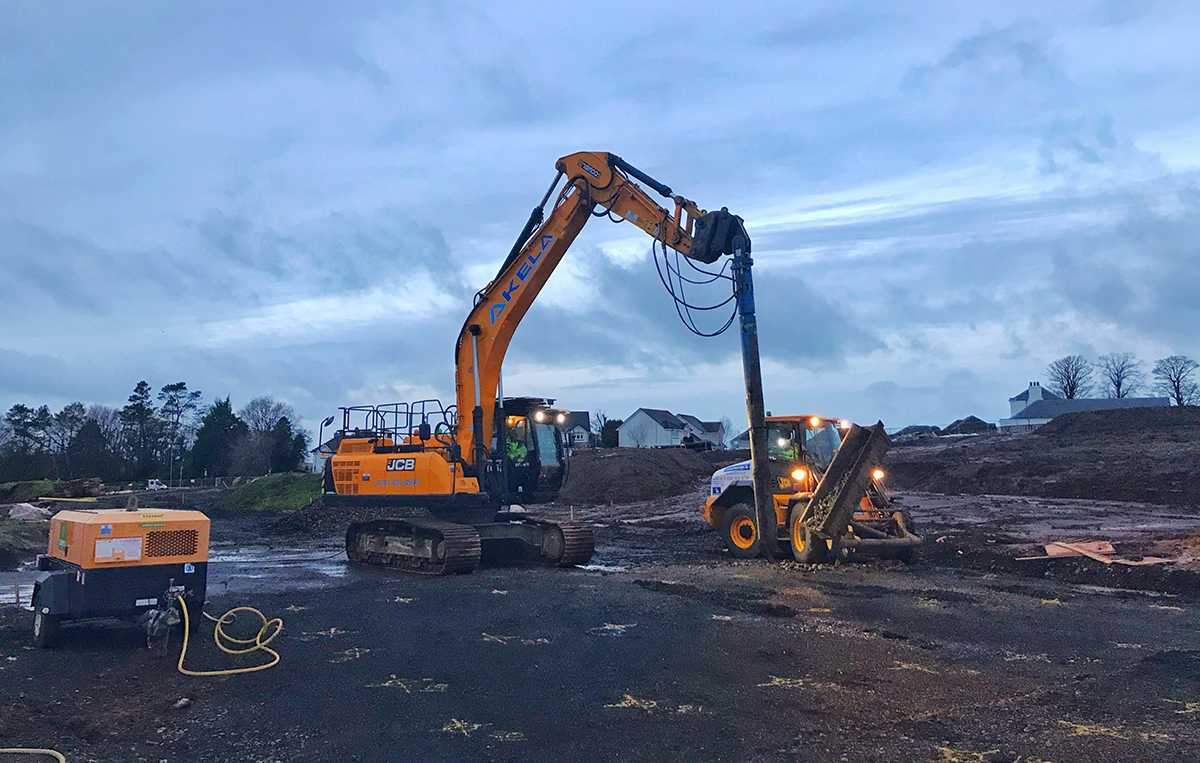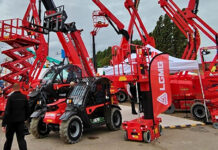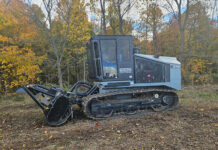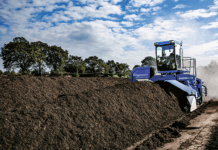There is no silver bullet to the shortage of affordable housing across the UK. Debate over the barriers to meeting targets is complex; not all of these are easy to resolve but advances in equipment can offer solutions to help drive activity forward. Akela Construction and Civil Engineering Ltd is making significant investment in equipment and techniques. Here, Derek Lennon, geotechnical design manager, discusses four examples of what the firm is doing on sites across Scotland to increase speed and efficiency for housebuilders.
Speeding up site investigation
Initial site investigation work can be a time-consuming task for builders as they determine layouts for developments. Ground conditions can differ over short distances so accurate data and suitable area coverage is incredibly important when assessing the suitability of a site. For the last several years, Akela has championed the use of Static Cone Investigation and now offer this as a standard service. Utilised before the final costing stage, the cone rig has in-built software which can test the strength and suitability of soil. It then sends measurements and analysis directly back to engineers via email.
A small and easily portable tracked machine, the static cone can be attached to a larger all terrain vehicle for speed of movement or alternatively it is equally suited to restricted access site conditions. The CPT rig can provide accurate data enabling housebuilders to expedite work onsite.
Akela was among the first companies to use the Pagani static cone in the UK and we have used it on approximately 15 sites. Not only does it enhance ground investigation work, it also allows us as the supplier to quantify the risk and absorb this fully on behalf of our client – improving the relationship and speeding up the house building process.
Traditionally seen as bespoke and specialised, Static Cone Investigation is now becoming more mainstream with Akela using it at various sites for Cala, Bellway and Avant. Static cones are definitely improving on-site efficiency for our clients. At Fardalehill in Kilmarnock, for example, Bellway were able to save around four to six weeks’ worth of time due to us being able to eliminate the need for time-consuming changes to piling or shallow foundation locations and the overall scope of work.
The quality of the data and information produced by the static cone enables housebuilders to get onto a site quicker with no surprises. There is now real potential for this to be used more widely for site investigation work at an earlier stage in a project timeline.
Employing efficient prefabrication methods
Speed and efficiency is going to be a key factor in addressing the UK housing shortage and prefabrication of materials off-site is becoming an increasingly cost-effective and viable option for developers.
Akela is the first company in Scotland to produce high quality reinforcement jointing systems and cages of various sizes – allowing clients to simply take delivery ready to install onsite. In turn, this can help to speed up placement of ground beam reinforcement allowing rapid in-situ concrete works.
After using this method for around three years, Akela now operates it across all sites.
Prefabrication of components like these offsite is two to three times faster and offers significant cost savings as there is no site steel fixing required. Previous ways of piling are becoming less attractive to housebuilders who now need a more efficient integrated pile and beam package to provide affordable housing faster. This method is perfectly suited to timber kit housing projects between two and four storeys..
Noise and vibration reduction
Doing significant site work within close proximity to other buildings can present multiple challenges, particularly vibration and noise. To minimise this, Akela has increased the use of excavator mounted torque drivers on sites which can allow for a pre-bore auger to manage vibration risk or the installation of screw piles which can help to overcome ground obstructions and working environment restrictions.
The torque driver can be attached easily to an excavator and works off the machine’s hydraulics. On sites where space is limited, this enables us to work more efficiently. With the pre-bore auger attachment we’re able to remove bricks, concrete and other debris to install piles faster and with reduced noise.
Having used this kit on between 50-60% of sites over several years, Akela took the decision to invest in its own torque drive equipment and this is now being used on half of all its projects.
Screw piles are becoming more popular with developers, particularly on projects like smaller extensions to houses or industrial units which are likely to be within close proximity to other buildings and with difficult access.
A good example to illustrate the effectiveness of this technique is at Bellway West’s site at Thornliebank. People were moving into houses immediately next to empty plots which were about to be built on and a retaining wall was required along the side on an existing garage forecourt. Using the screw pile method meant Bellway could continue to work at pace with minimal noise and vibration impact.
Traditionally used in America, screw piling is quickly gaining traction across the UK with Network Rail, in particular, choosing to employ this method frequently.
Building more sustainably
Advances in technology means Akela is able to deliver more for clients using fewer pieces of equipment – allowing it to reduce its environmental impact.
As a company we are committed to delivering the highest quality work for our clients as efficiently and sustainably as possible. The use of quick hitch systems, for example, lets us interchange between driven piling, sheet piling and bored piling using one base machine.
Attaching a Vibroflot Poker – a 4m long vibrating steel tube – to an excavator using a quick hitch system allows Akela to compact gravel into layers to provide ground improvement solutions. Being able to quickly change between different attachments on a single machine in as little as ten minutes, offers time and cost savings previously unseen across the building sector.
The benefits of quick hitch and excavator mounted displacement foundation systems are now being noticed across the industry which can only be a good thing for housebuilders.



